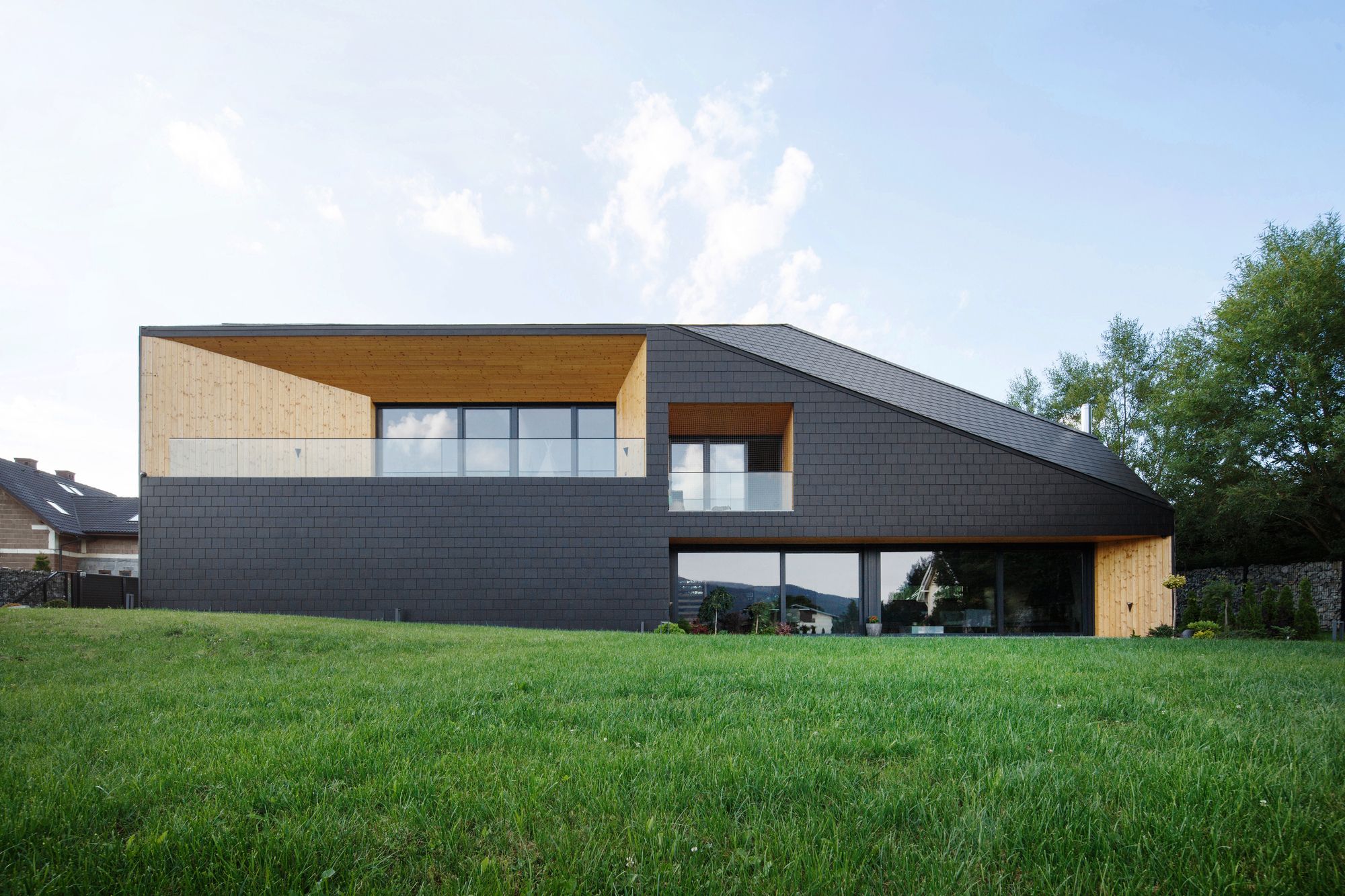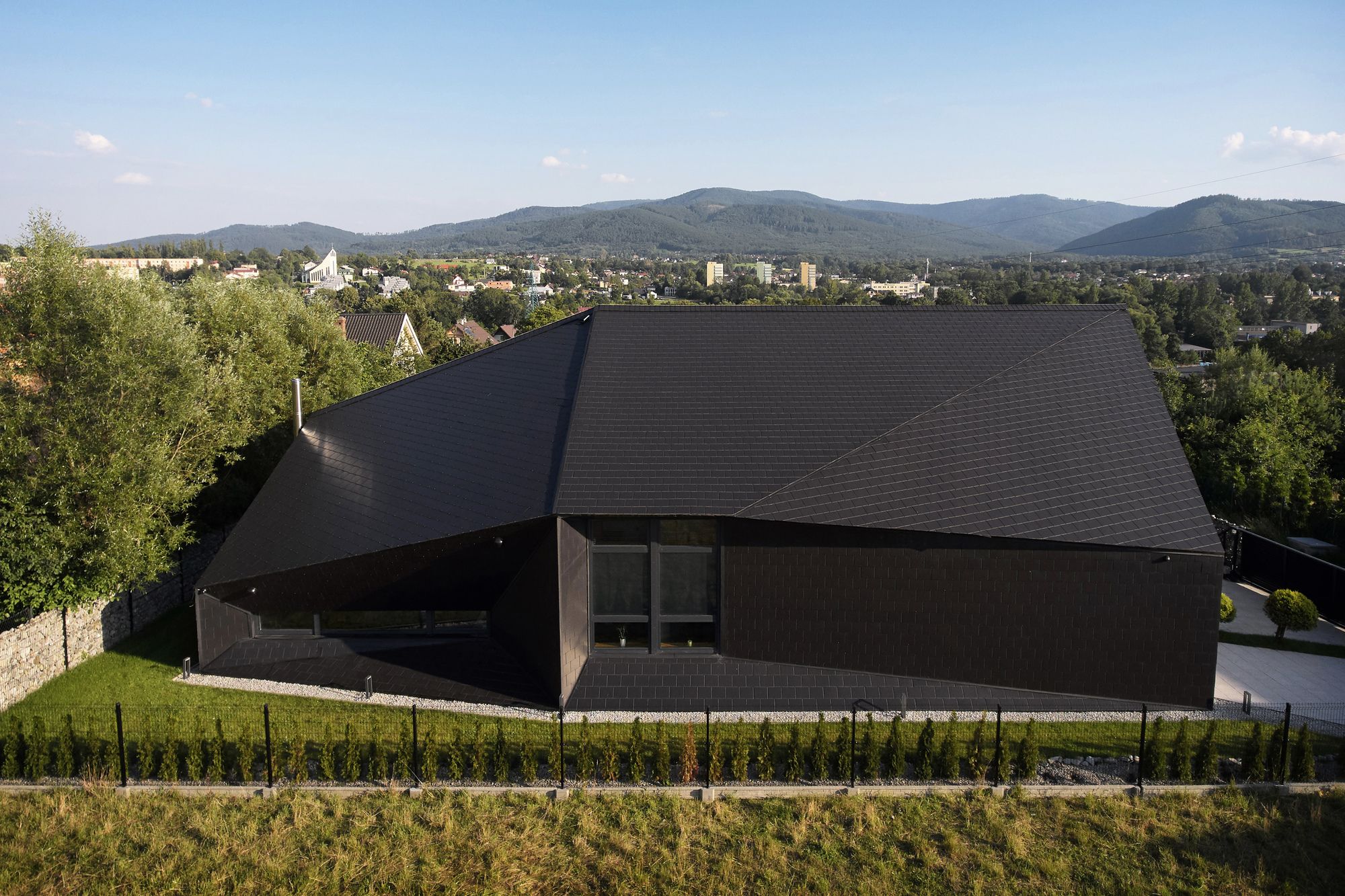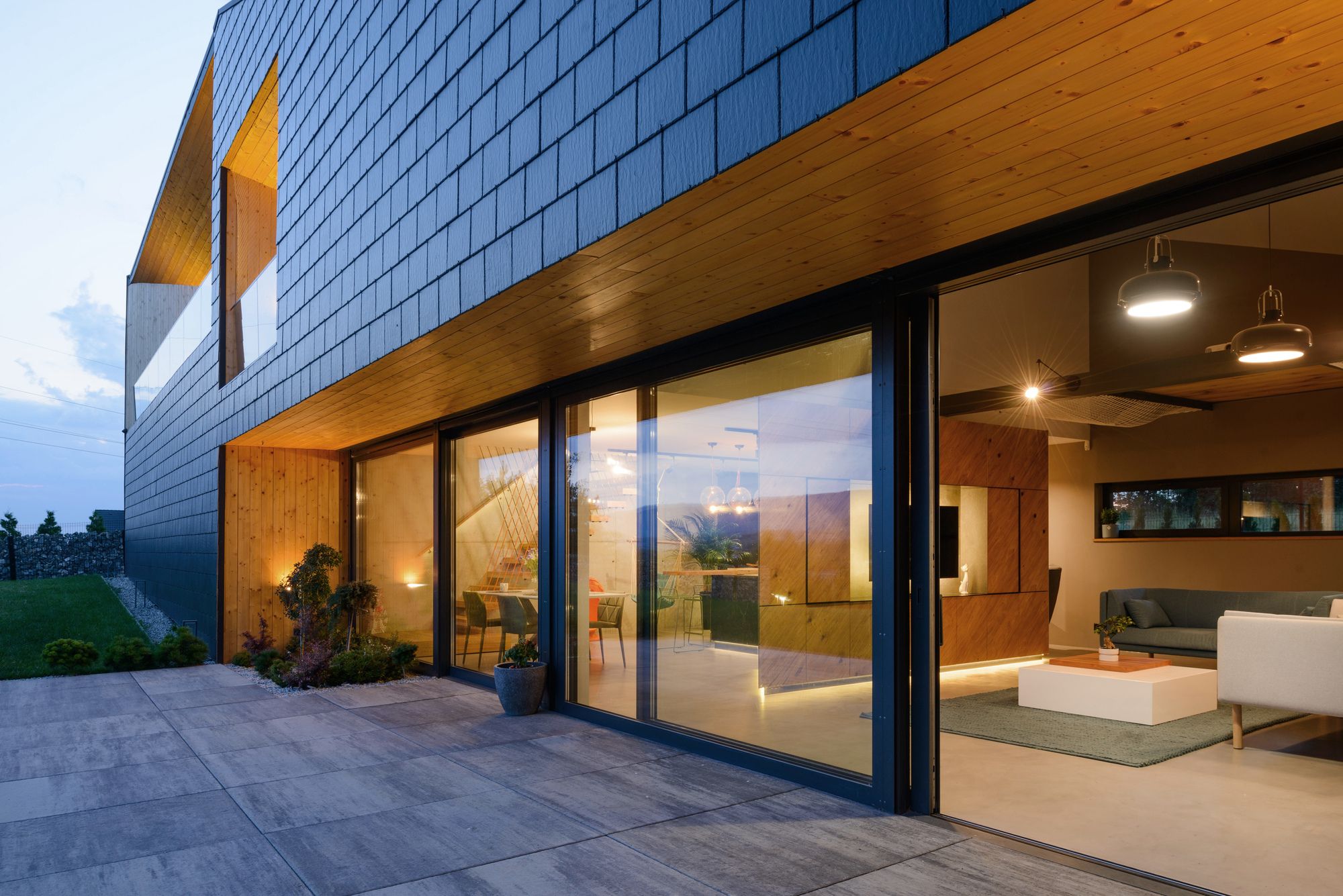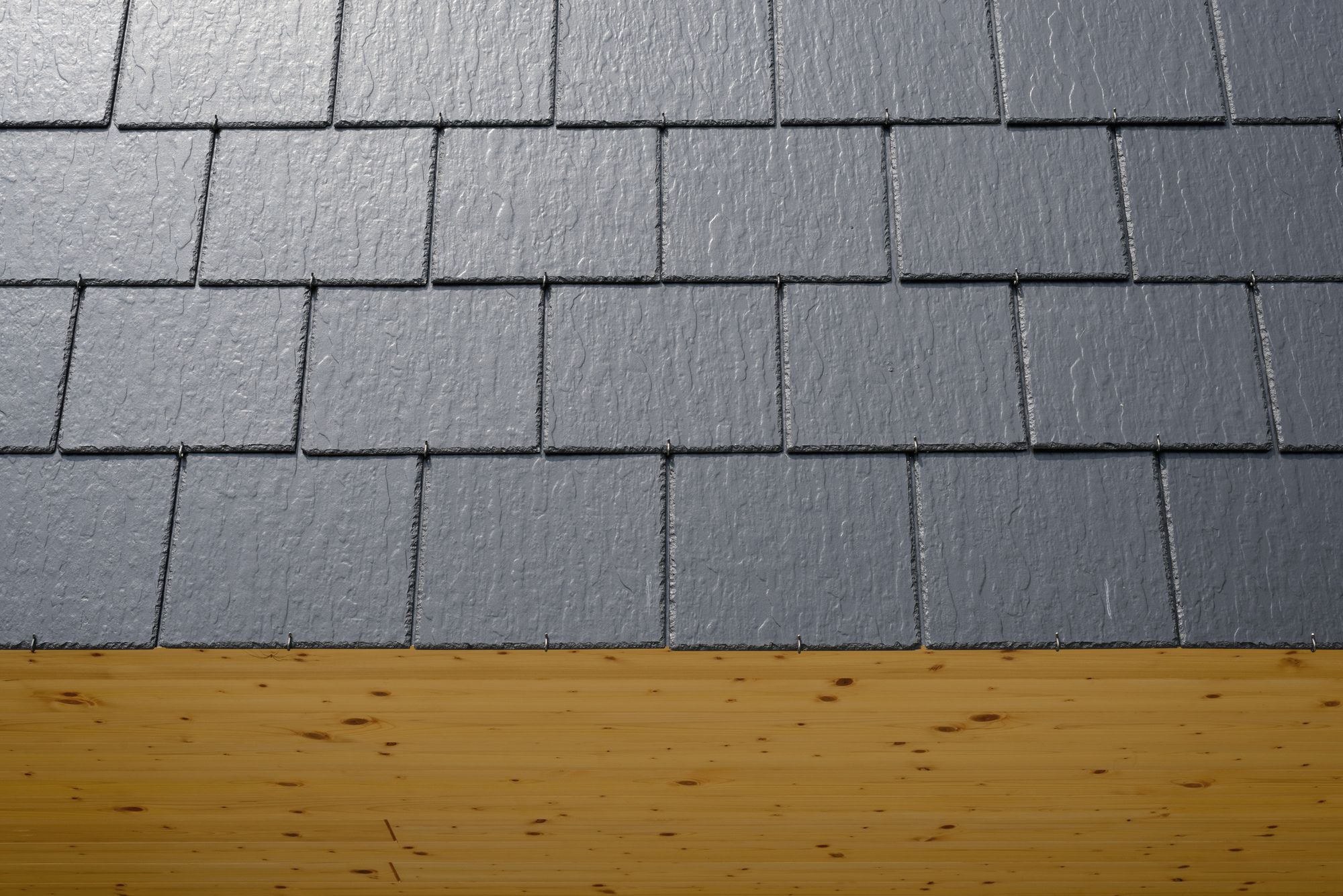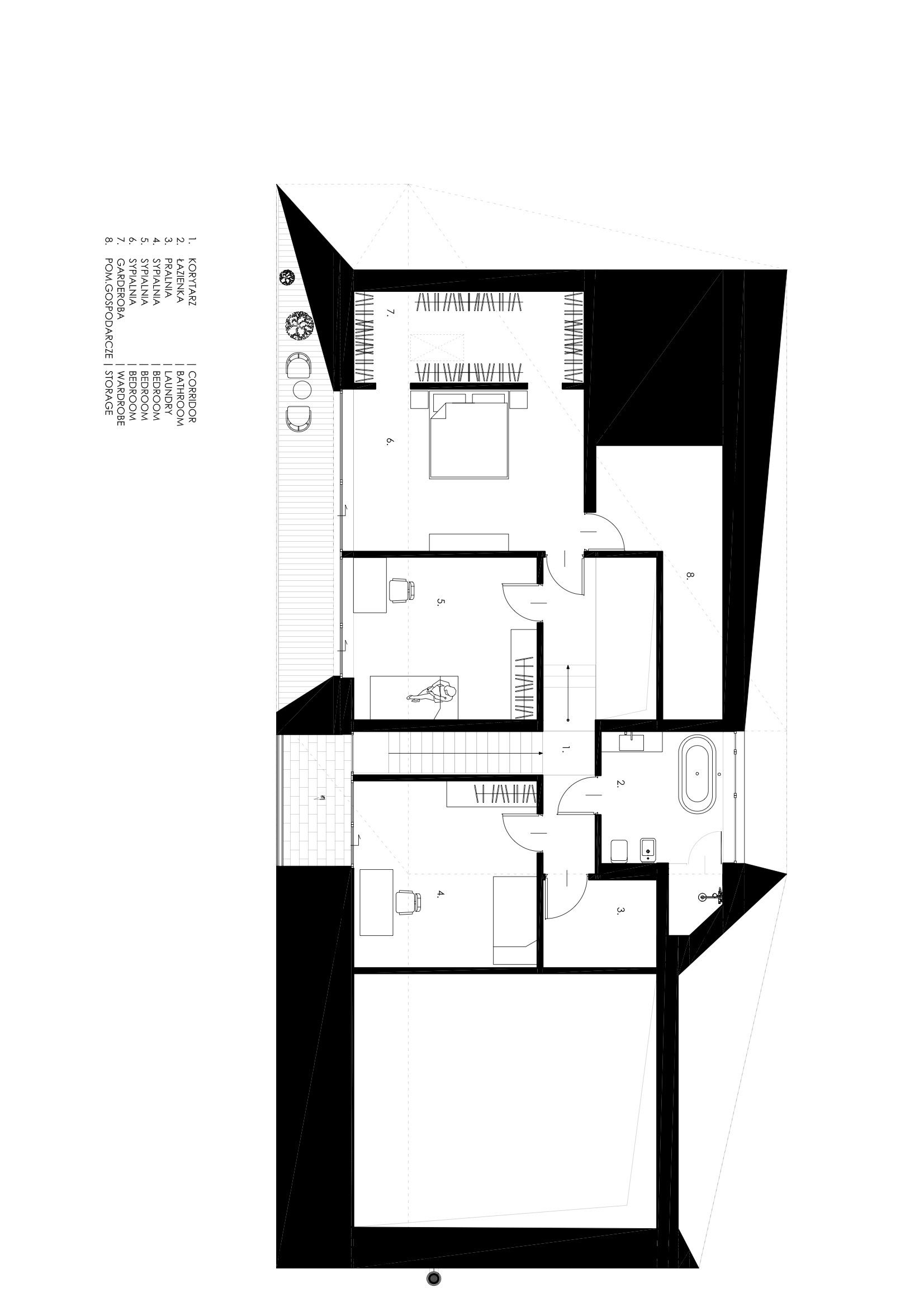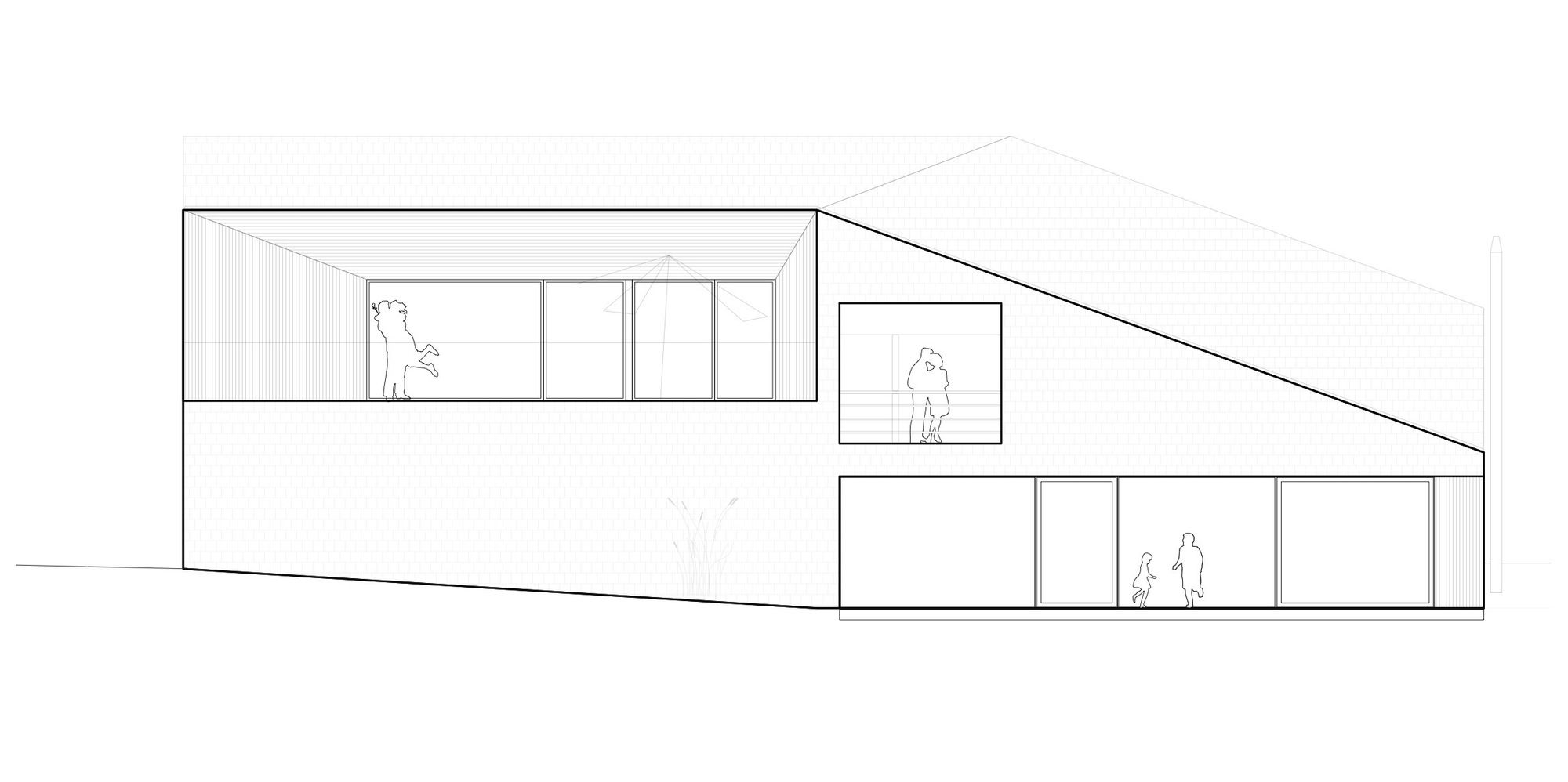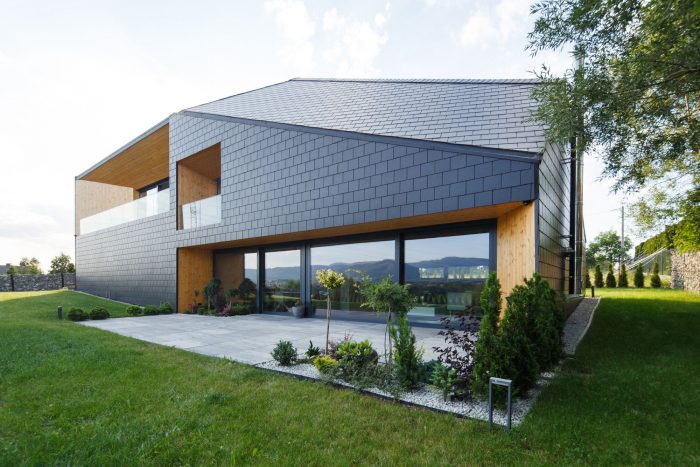IDEA
Designed by MUS ARCHITECTS, The main idea was to create something different and original. Not just a single-family house, but an abstract form.
We wanted to create a building that refers to the mountainous area, a house that seems to be a result of tectonics and not design processes.
This thought was the starting point of the project and the frame that kept the space composition in check.
Therefore, we tried to design and implement the concept of a space by escaping the standards associated with single-family houses. We wanted this house to emery like an erratic boulder embedded in a mountain slope, not an architectural form with walls, windows, and a roof.
FORM
“Black Rock” originates from the topography of mountainous terrains. “The Rock” is not a cuboid, a cube or a classic house with a gable roof. It is an abstract multifaceted solid without obvious division into walls and a roof
In the south, the house opens up to the garden, the sun and the view of the Beskids (mountains). The southern wall is high and includes openings such as glazing, terrace, and loggia, which provide a panoramic view. The northern facade mostly consists of a roof slope falling to the plot border – the house’s wall is low and closed here.
STRUCTURE, FORM, MATERIAL
The plot is situated on the slope of the mountain. It has a clear decline both in the south and east.
The initial plan of the house was adjusted to the slope so that the entire ground floor sits on the ground surface. Based on the natural terrain, the horizontal floor plan was broken halfway through. As a result, the entrance zone with a garage and supplementary rooms is on a different level from the living room, kitchen and dining room. A half-floor has been created so the entire living area is directly connected with the terrace and garden.
This design process led to the division of floors in the night part of the house (first floor) and as a consequence, we created the multi-pitched roof, whose refractions follow the faults resulting from the house’s functional layout in the actual area.
Thus, the form of the roof and the body resulting from the functional design objectives being adapted to the landscape.
The building’s geometry was built into the topography of the mountain, highly impacting the house’s structure and its final dynamic form.
There is a strong relationship between the building and the surrounding landscape.
The external character of the house is formed by its multi-layered form as well as by the material which was used as a packaging of the function. The homogeneous and raw black shell conceals internal spaces and levels.
Sharp, jagged boulder, black slate or basalt lump sticking out of the mountain slope, instead of a classic suburban house.
The entire creative process was based on the original idea. It became the genesis of the project and was brought through the entire design and construction process, until the end – the implementation of the “Black Rock”.
THE GENESIS OF THE HOUSE’S SHAPE
Determining the horizontal floor plan along the northern boundary of the plot;
Designation of arcades: entrance and garden;
Adjusting the levels of the horizontal floor plan to the topography of the area; The driveway is much higher than the garden. We implemented a breakage in the horizontal floor plan. The living area opens onto the garden, at the same time being situated lower than the entrance zone and the garage;
Another consequence of the design strategy is the functional layout of the first floor. Horizontal floor plan continues the breakage that was introduced in the lower floor. Two rooms and a closet were placed in the upper part of the plot above the garage.
The remaining floors are situated in the lower part of the house, above the kitchen and dining room. In the living area, the desired higher ceiling was also obtained – empty space above the living room;
The most important rooms were situated in the southern part of the plot. They open to the sun, garden, and the view. Supplementary rooms are at the northern side. The local plan imposed the necessity of designing a roof sloping in the designated range (from-to). However, the number of roofs and the location of the ridge have not been imposed.
The local plan imposed the necessity of designing a roof sloping in the designated range (from-to). However, the number of roofs and the location of the ridge have not been imposed.
The roof in the design.
The ridge is parallel both to the longitudinal axis of the floor plan and the northern boundary of the plot. Ridge – the highest part of the roof has been moved from the longitudinal axis towards the south wall. It allows us to have more of a usable space at the best side of the house (open to the view, garden, and sun).
The ridge break corresponds to the functional system:
The collapse of the roof slope is closely related to the functional layout of the house, which has been adapted to the cardinal directions, slope reduction and significant level differences of the plot:
The form of the roof is the result of the design process. It is a flexible packaging, closely related to the function, and in this particular case also to the original location:
The roof follows the function. And the function adapts to the topography and the landscape;
The form is associated with the function
The form is associated with the topography
The architectural expression created by the above design process has been applied in a coherent and uniform manner for all house external partitions, creating a homogeneous skin covering an attractive and dynamic form that derives from the topography of the mountainous terrain.
LANDSCAPE PLANNING
On the plot that significantly declines towards the south, we designed a single-family detached home. It consists of all the functional features we have planned. The living area and a garage for two cars, as well as an additional room on the ground floor. The total area of the house is 260 square meters.
The building was located along the northern side of the plot. The entrance is planned from the west side, away from the border in such a way that it is easy to access and park at the property.
A large part of the plot in the south remains undeveloped – there are a garden and terraces with the view of the mountains.
ARCHITECTURE
A private single-family detached home.
Functional plan: GROUND FLOOR – it is a living area with open kitchen, dining room, and living room.
On the ground floor, there is also a toilet and a double garage with a passage directly to the house via a vestibule.
There is also a technical and utility room, accessible from the garage.FIRST FLOOR – a night area with three bedrooms, a bathroom accessible from the corridor and a closet accessible from the master bedroom. All rooms, through large glazing, have access to a loggia facing the south.
The ground and first floors are connected by a single-flight, reinforced concrete staircase.
A non-usable part of the attic is accessible via a folding loft ladder
The building is a monovolume compact house. The form and dimensions of the building result from functional conditions as well as from the plot. It has characteristic contemporary, simple shape.
The form and dimensions of the building result from functional conditions as well as from the plot. It has characteristic contemporary, simple shape.
The designed building is detached, with a multi-pitched roof (a slope of 25⁰ and 42⁰ ).
The walls and roof of the building are homogeneous and uniform – finished with the same material (fiber-cement flat Cembrit Quadra tiles), thus the house Tomasz Zakrzewski obtained a consistent character. The niches in the black block of the house are finished with a larch elevation board.
In the south, large solid glazing and windows provide direct access from the living room to the terrace and from the rooms on the first floor – to the balcony and loggias.
The body of the building, in the area of the main door, has been withdrawn, providing an entrance arcade on the front facade (driveway and main entrance) Project Info:
Project Info:
Architects: MUS ARCHITECTS
location: Bielsko-Biała, Poland
Area: 260m2 (ground floor 168m2 + first floor 92m2)
Project Year: 2018
Photographs: Tomasz Zakrzewski
Project Name: Black Rock

